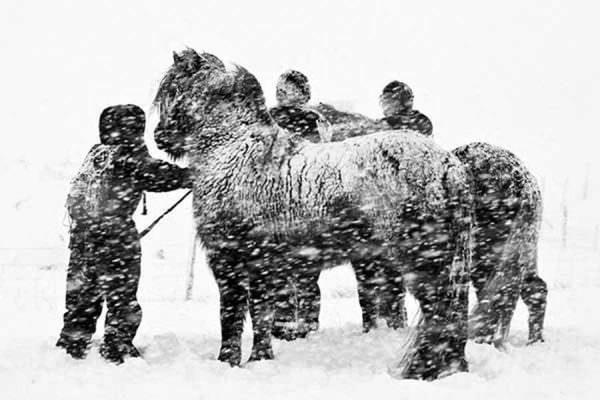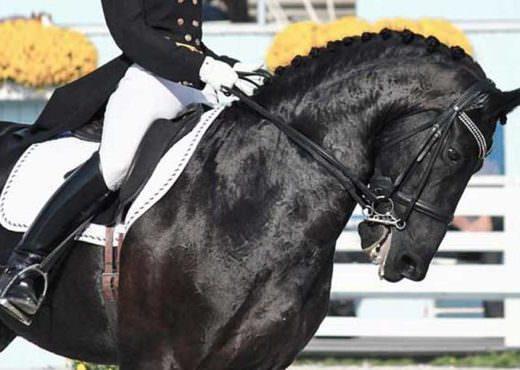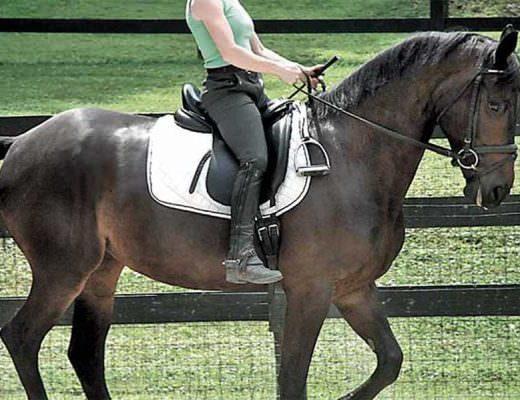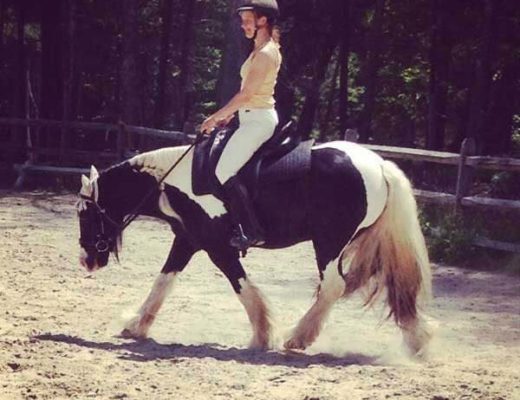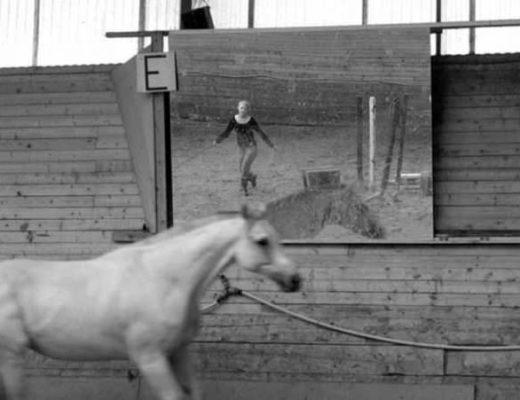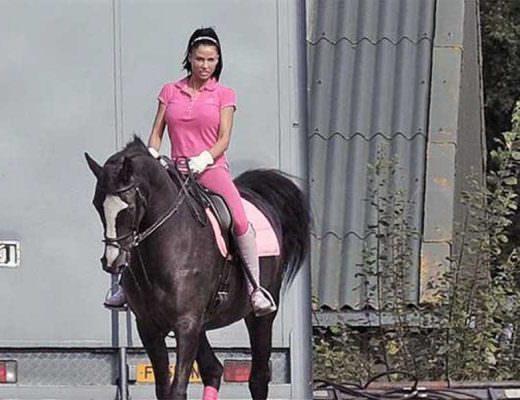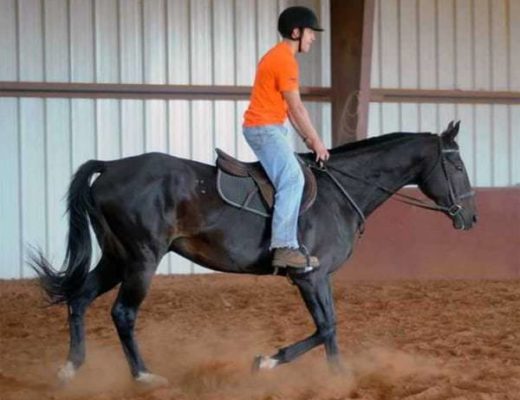This winter we've been hit particularly hard in the Midwest with sub-zero temperatures, to which I've simply resigned myself to the fact that riding will have to wait.
But, that doesn't mean I've resigned myself to lose any hard-won skills in riding. These can be both physical and mental skills, and there's nothing more rewarding than coming back to riding after a forced holiday feeling like you haven't skipped a beat.
1) Modify Your Exercises at the Gym
I'm a fan of going to the gym, more in the cold weather than during the summer, but I like the routine. I'm also in the habit of riding in a rather ‘lazy' fashion so rarely do I get any kind of physical workout while seated in the saddle; unless I'm doing posting trot without stirrups or seat exercises.
I like to adjust the way I use the machines at the gym and even my running form so it builds strength in my posture for riding. Your position in the saddle is a top priority to riding correctly and if you're weak in your core or have a problem maintaining your posture the horse will respond to this in ways you dislike and may not expect.
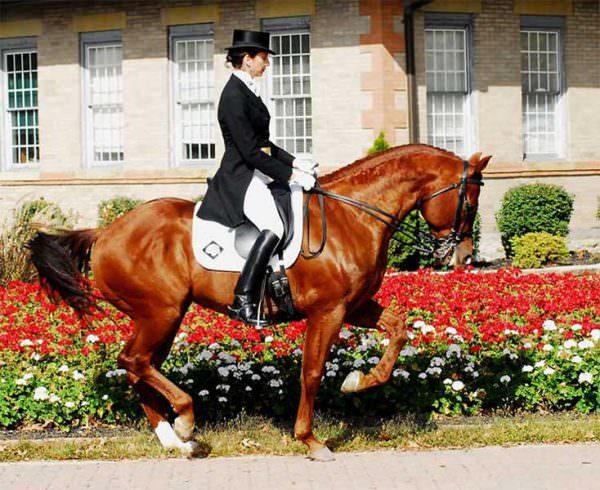
It can help to visualize a favorite Master as exemplary posture.
- Focus on bringing your upper body back so that it almost feels like you'll fall backwards. You won't, that's what the handles on the machine are for.. safety first! If there are side mirrors in your gym you can spy yourself to see if your upper body is properly aligned straight up and down or if you're leaning too far back or too forwards.
- Practice flattening your lower back in every exercise you do.
- Create a full body workout on elliptical machines by pushing forwards, side-to-side and otherwise engaging your arm muscles on the handles while you run.
- Work on balance by running on any of the machines without holding onto their handles. Figure out where your center of gravity is and try to force it lower into your pelvis where it should be for riding.
Hold your arms straight down, bent at the elbows and your hands lightly cupped in front of you like you were riding your horse. How much are your arms moving while you stride on the elliptical or climb the stairmaster?
Speed up and slow down without grabbing onto the handles of the machine, adjusting your body for the changes and keeping your center of gravity low. - When running off a treadmill avoid falling into one steady stride. Practice running with long strides at a slow pace, or a slow pace and tiny strides and the full range in between. Practice running with long strides and a fast pace, and tiny strides at a fast pace; again with variations in between.
Avoid leaning forwards when you run. Can you run with no side to side upper body movement? Can you run with your arms relaxed but stationary (not swinging)? Think about how your form in running should mimic your form in riding. Flatten your lower back, upper body erect or slightly back. Lead with the front of your hips.
All of these changes can also help develop a better range of motion through your hip muscles. - On a machine still? Close your eyes. Where is your balance now, your stride, your center of gravity? Sometimes closing your eyes can help focus your attention to your body where you're otherwise distracted by your surroundings.
2) Stretch, stretch and stretch some more
Stretching is that thing nobody wants to talk about. They want to ignore it or rush through it in their workout routine. But, most stretching is done in a way that either causes more damage to your body, or doesn't create any long-term changes.
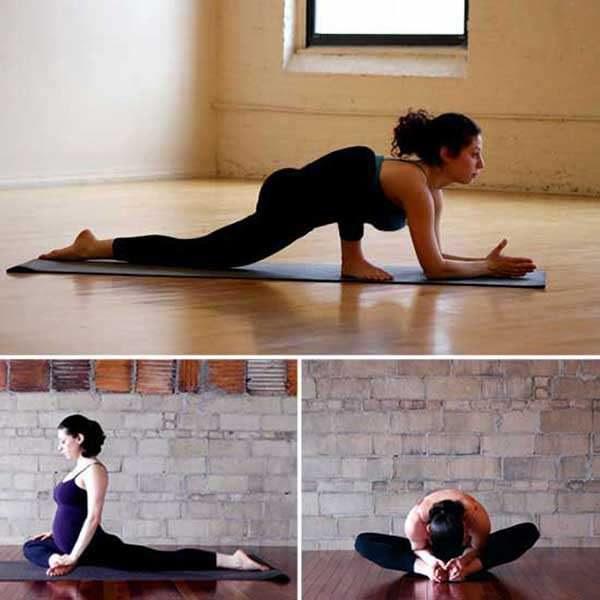
Why is stretching so important as an equestrian?
- Stretching can alleviate uncontrolled muscle tension in the saddle;
- Effortlessly improve your posture and position in the saddle;
- Improve your ability to sit the horse's gaits including the sitting trot;
- Fosters separation of the aids, necessary for advanced riding;
- Can alleviate body pains, improve old injuries and protect you from future injuries.
Like it or not, we're athletes. Not in a traditional sense, but our kind of sport is more complex as we also have to develop communication and relationship skills with our horse. So stop procrastinating about disliking stretching, forget what you know about stretching, and start doing it every day whether you workout or not.
How to Properly Stretch
- NEVER force yourself into any stretch, push past pain or ‘bounce' your body into a stretch;
- Think of stretches like reps; get into your stretch position and move into the stretch for a count of 10-seconds, then contract the muscles you're stretching for 10-seconds while still in the stretch position, then move into the stretch again for a count of 10-seconds. Repeat however many times you like.
- Follow up your stretching reps with a relaxed stretch lasting a minimum of 90 seconds. Stretching for less than 90-seconds will NOT create permanent changes in your muscles so all the stretching up until now will have been wasted time.
- Never stretch an inflamed, sprained, strained or torn muscle – wait for it to heal first.
- I reiterate, never force yourself into or through any stretch. If you experience pain, back off the stretch until the point you feel your muscle in tension but NOT in pain. And lastly, don't bounce. Anyone who's seen this or done it will know what I mean. Ignoring these you can actually cause further damage, tissue scarring and loss in range of motion – the opposite of what you're working for.
Generally I'll spend anywhere from a half hour to two hours in some cases, stretching, after a workout. Most of it is focused on my hip flexors, glutes, hamstrings and quadriceps. When your hips are open, relaxed and without muscle tension or resistance you are poised for an ideal ride. It allows you to more easily separate your aids as well as move with the motion of the horse without inhibiting him. Want to improve your sitting trot? Spend more time stretching.
Even if you don't workout it's a great habit to get into of stretching your hip region every night before bed. It can also help mitigate lower back problems which are very prevalent among equestrians (7 years ago I managed and fully recovered from a bulging lumbar disk and the associated pain/numbness that made it impossible to stand, walk, ride, even at times lay down without excruciating discomfort – just by doing nightly stretches).
And if you're just starting out to stretching don't be discouraged by your limited range of motion. This is normal, and if you didn't have some kind of limit to your ROM there'd be no reason to stretch!
3) Visualize Your Ride
In many other sports, athletes make use of visualizing their performance, competition, form, etc. Just by running through an action in your head, consciously, can allow you to improve without having actually performed the action physically.
I spend some time visualizing rides, whether I'd like to improve the way I ask for a certain transition or even just change my position in the saddle.
In the evening is a great time, when you're in bed for the night. Put on some relaxing music, close your eyes and begin step by step the process of your ride. Make changes where you imagine they need to occur and imagine the change being reflected in the horse.
